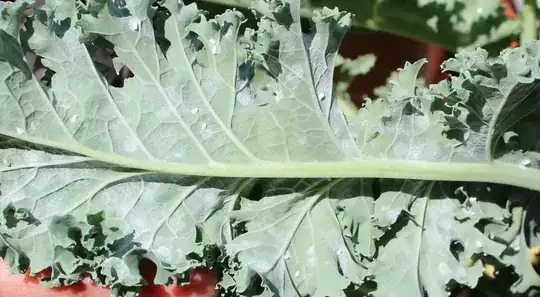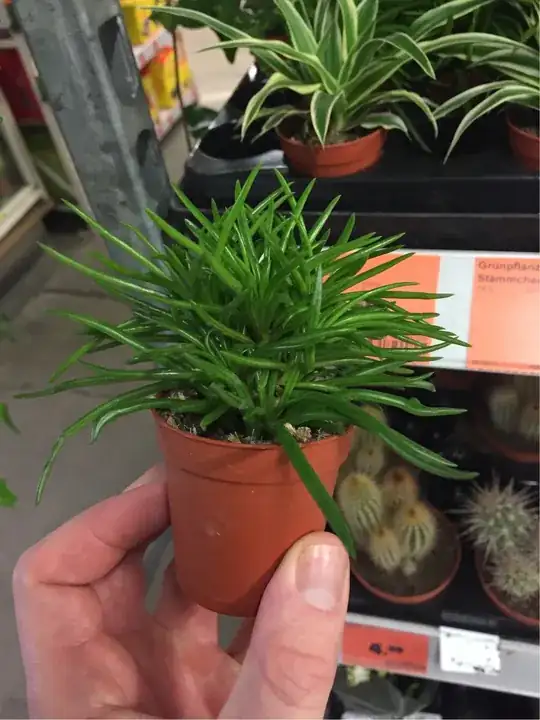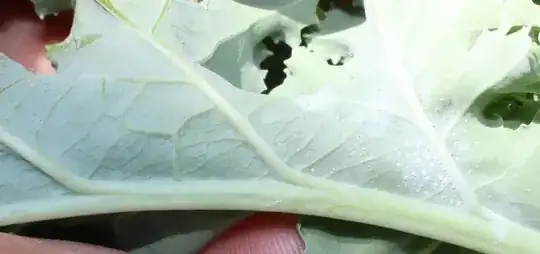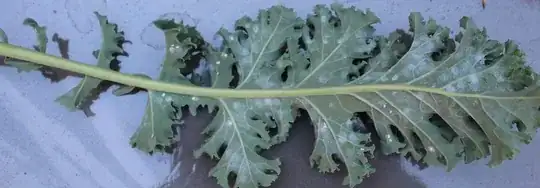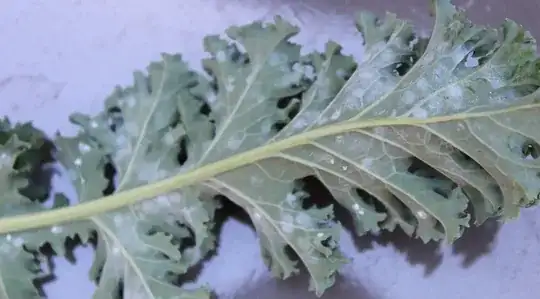Identification starts with getting as much information using all senses. The photos are great, but we cannot tell what happens if you rub on a spot, does it come off or is it damage to the leaf? Do you have other brassica type crops close by showing similar effect?
Then we can speculate on cause: starting with simplest, is it perhaps an evaporated deposit? Since it is not on the top of the leaf maybe it was washed off. Do you splash plants with hard water, say from underneath with soaker hose?
There is a fungus that can attack kale and similar crops called white spot fungus. I will let you look up the details on that, they are quite detailed and don't bear repeating here. Only check this if the simpler explanations don't apply.
Some insects can attack the leaves and leave deposits, however if it was aphids the honeydew regularly turns black as the sugars grow their own fungi. The whiteness of the spots argues against this. I hope this gets you started.
